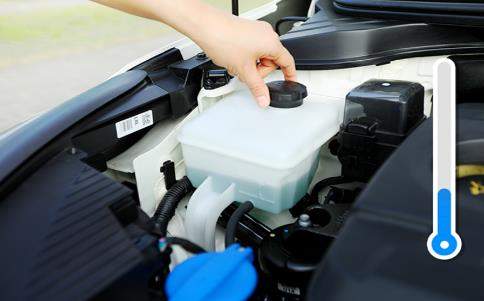open menu
- Home>
- Discover Kia>
- ASK>
- What is a radiator in a car?
What is a radiator in a car?
“A radiator is a component of the engine’s cooling system that disperses a mix of antifreeze and water, which releases some of the heat while taking in cool air before returning to the engine.”
The Definition of a Radiator
A radiator is the key component of the engine’s cooling system. Its main role is to disperse a mix of antifreeze and water throughout its fins, which releases some of the engine’s heat while taking in cool air before continuing to pass the rest of the engine. Alongside the radiator is the spur line, water pump, and fan clutch. Each of these plays a different role in aiding the radiator to keep the engine cool. The spur line dispatches warm coolant to the heater core to produce hot air when needed, while the water pump sends the coolant to flow throughout the engine. Most importantly is the role of the fan clutch, which is to bring more air into the radiator and help lower the temperature of the antifreeze and water mixture.
Parts and Operating Principles of a Radiator
Within the radiator itself, it has 3 main parts, known as the outlet and inlet tanks, the core, and the pressure cap. Each of these 3 parts plays its own role within the radiator.
The main role of a radiator hose is to connect the engine to the radiator and allow the coolant to run through the respective tank. The inlet tank is in charge of guiding the hot coolant from the engine to the radiator to cool down, then it circles back out to the engine through the outlet tank.
After the hot coolant comes in, it circulates through a huge metal plate that contains multiple rows of thin metal fins that help cool down the incoming hot coolant, called the core. Then, it is returned to the engine through the outlet tank once the coolant is at the appropriate temperature.
While the coolant undergoes such a process, there is also the pressure or radiator cap, whose role is to tightly secure and seal off the cooling system to make sure it stays pressurized till a certain point. Once it reaches that point, it will release the pressure. Without the pressure cap, the coolant might overheat and cause an overspill. Thus, causing the radiator to work inefficiently.
Just as with other parts of your vehicle, your radiator will also need to be checked and cared for regularly. Here are some tips for maintaining the radiator of your vehicle.
- Take caution when checking the level of coolant and the radiator! Please bear in mind, you should never open the radiator cap or the heater hose connector cap when the engine is running, as hot coolant can erupt and cause burns and other injuries. When checking the coolant, turn off the engine and wait for it to cool. Then, slowly and carefully open the cap with a thick cloth.

- When refilling the coolant level during the freezing winter season, it is crucial to add antifreeze and make sure they match at a 5:5 ratio. Otherwise, cool water can freeze within the engine. In addition, adding antifreeze with coolant can prevent the radiator grille or related parts from corroding.
- To prevent harmful particles or rust erosion, be sure to clear out the radiator at least once every 30,000 kms or 12 months(It is recommended to check the owner's manual).
- Each time you change your oil, it is also recommended to take a look at your radiator hoses to see if there are any noticeable cracks or leaks.
- Lastly, if any electrical work was done on your vehicle when installing your radiator or heater, you should check to see if there are any stray currents as they can cause corrosion which can lead to radiator failure.








